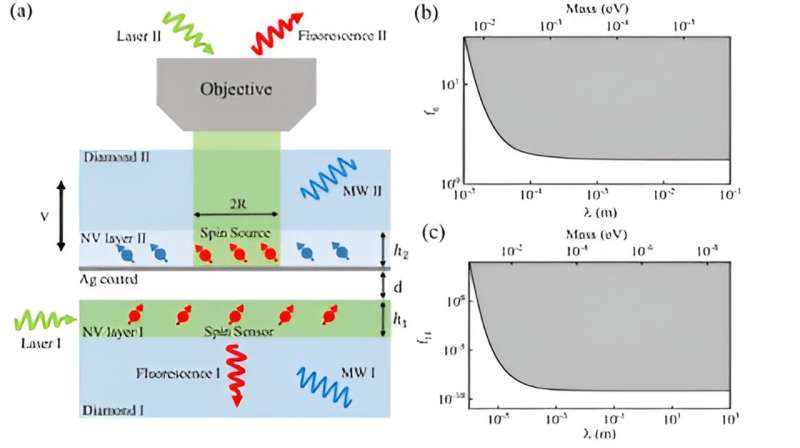
JUNE 17, 2024 by University of Science and Technology of China
Collected at: https://phys.org/news/2024-06-constraints-exotic-velocity-interactions-electron.html
A research team has utilized solid-state spin quantum sensors to scrutinize exotic spin-spin-velocity-dependent interactions (SSIVDs) at short force ranges, reporting new experimental results between electron spins. Their work has been published in Physical Review Letters.
The Standard Model is a very successful theoretical framework in particle physics, describing fundamental particles and four basic interactions. However, the Standard Model still cannot explain some important observational facts in current cosmology, such as dark matter and dark energy.
Some theories suggest that new particles can act as propagators, transmitting new interactions between Standard Model particles. At present, there is a lack of experimental research on new interactions related to velocity between spins, especially in the relatively small range of force distance, where experimental verification is almost non-existent.
The researchers designed an experimental setup equipped with two diamonds. A high-quality nitrogen-vacancy (NV) ensemble was prepared on the surface of each diamond using chemical vapor deposition. The electron spin in one NV ensemble serves as a spin sensor, while the other acts as a spin source.
The researchers searched for new interaction effects between the velocity-dependent spin of electrons on a micrometer scale by coherently manipulating the spin quantum states and relative velocities of two diamond NV ensembles. First, they used a spin sensor to characterize the magnetic dipole interaction with the spin source as a reference. Then, by modulating the vibration of the spin source and performing lock-in detection and phase orthogonal analysis, they measured the SSIVDs.

For two new interactions, the researchers conducted the first experimental detection in the force range of less than 1 cm and less than 1 km respectively, obtaining valuable experimental data.
As the editor remarked, “The results bring new insights to the quantum sensing community to explore fundamental interactions exploiting the compact, flexible, and sensitive features of solid-state spins.”
The team was led by academician Du Jiangfeng and Prof. Rong Xing from University of Science and Technology of China (USTC) of Chinese Academy of Science (CAS), in collaboration with Professor Jiao Man from Zhejiang University.
More information: Yue Huang et al, New Constraints on Exotic Spin-Spin-Velocity-Dependent Interactions with Solid-State Quantum Sensors, Physical Review Letters (2024). DOI: 10.1103/PhysRevLett.132.180801
Journal information: Physical Review Letters

Leave a Reply